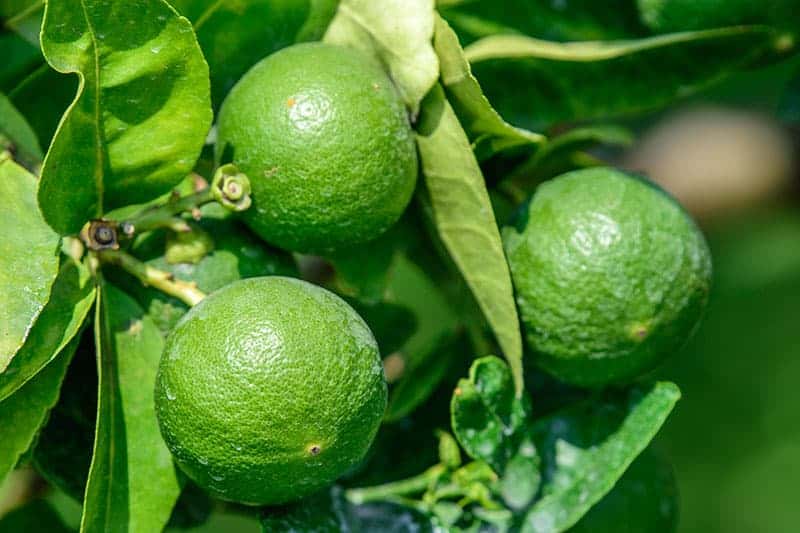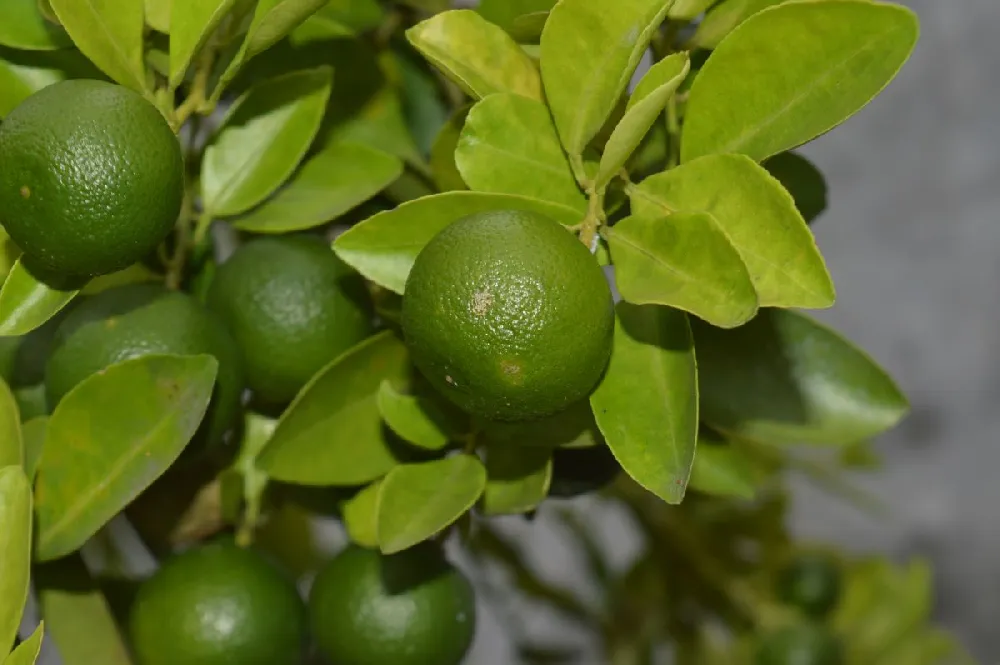- Home >
- Lime Trees
Lime Trees for Sale - Buying & Growing Guide
Filters
Price Range
Growing Zones
Plant Type
Sunlight
Mature Height
Plant Characteristics
24 Results
-
Growing Zone(s): 3-11 / 9-11$94.95
-
Growing Zone(s): 3-11 / 9-11$76.95
$78.95Save up to 2% -
Growing Zone(s): 3-11 / 9-11$99.95
$144.95Save up to 31% -
Growing Zone(s): 2,3,4,5,6,7,8,9,10,11,12$17.95
-
Growing Zone(s): 3-11 / 9-11$58.95
$59.95Save up to 1% -
Growing Zone(s): 3-11 / 9-11$109.95
$134.95Save up to 18% -
Growing Zone(s): 3-11 / 9-11$59.95
$77.95Save up to 23% -
Growing Zone(s): 3-11 / 9-11$72.95
$99.95Save up to 27% -
Growing Zone(s): 3-11 / 9-11$81.95
$124.95Save up to 34% -
Growing Zone(s): 3-11 / 9-11$84.95
$92.95Save up to 8% -
Growing Zone(s): 3-11 / 9-11$75.95
$82.95Save up to 8% -
Growing Zone(s): 3-11 / 9-11$56.95
$57.95Save up to 1%
Lime Trees – Buying & Growing Guide
Lime trees are easily grown outside in the southern parts of the U.S., but they also adapt well to pots, and are a fruitful edition to the indoor garden. An indoor lime tree may, in fact, bloom and set fruit just as well as its outdoor cousin, and provide a small but tasty harvest throughout the year.
How to Grow Lime trees
How to plant lime trees
Plant your lime tree in a location that gets at least six to eight hours of full sun per day. Choose a site that drains well, or — if you’re planting your sapling in a pot or planter — choose a light soil mix that is sandier than usual so that water won’t pool around the plant.
Dig a hole for your tree twice as wide as the root ball and a bit deeper. Remove your tree from its container and tease out any circling roots so they don’t girdle the tree and eventually strangle it. Place the tree in the hole so the top of the root ball is level with the soil. Backfill (replace the dirt you removed from the hole) with soil that’s mixed with compost and tamp down well.
Water the sapling well after planting. Give it enough that the ground seems saturated, wait until the water has seeped down, then give it another drink. Water your sapling several times a week until the tree has acclimated to its new home, which will take several months.
How to achieve maximum results
Handle your sapling carefully before you plant it. Keep it in a shady location and give it a good watering when you bring it home. If you live in a northern climate (anything north of zones 9-10), you’ll want to plant your lime tree in a pot so you can bring it inside in the winter. Lime trees can’t handle temperatures that are lower than about 40 degrees Fahrenheit. Keep your tree in a sunny window through the winter, or under grow lights, and it should be fine.
How to Care for Lime Trees
Watering and nutrients
For the first few months, water your lime tree at least once a week as it gets used to its new location. After that, give it a drink if you get less than one inch of rain during the week. If the tree’s leaves begin to fall off, it may be because it needs supplemental watering, so check it carefully every few days, especially during drought conditions.
Lime trees need regular nutrients. You can top-dress the area with enriched compost every few months, or you can feed your tree regularly (follow package directions for frequency) with a fertilizer formulated for citrus trees. In the winter, you can scale back on fertilizer. In the spring, give your tree the suggested dose of a fertilizer formulated with micronutrients such as iron and magnesium.
Pollination
Unlike many types of fruit, lime trees do not need to have multiple trees near each other to provide fruit. Each flower on a lime tree contains male and female parts, so pollination happens with just one tree. Bees and other small insects transfer the pollen from one flower to another. If you are growing your lime tree indoors, you will need to pollinate by hand, using a paintbrush or cotton swab to transfer pollen from flower to flower.
Pruning
Lime trees don’t require a great deal of pruning. Trim back diseased or broken limbs, or any branches that are rubbing against each other. If you are trying to keep your lime tree to a certain size, you can prune back any branches that are too high. If you are hoping to keep your tree small, consider planting a dwarf or semi-dwarf variety.
Pests and diseases
Lime trees may be susceptible to citrus canker, a bacterial infection you can control by using a copper fungicide. This fungicide will also control melanose, greasy spot, and sooty mold, which causes blackened leaves. Trim any infected leaves before applying the fungicide.
Common insects that may be found on lime trees include aphids, citrus whitefly, and citrus thrips. You can handle these insects with an insect spray that includes spinosad. This type of insect spray is approved for use in organic settings.
Harvesting
When your lime tree forms fruit, prune out any more than two or three limes per cluster. To know when it’s time to harvest, pick one lime and cut it open. You want fruit that is juicy and light green. Limes that are wrinkled have been left on the tree too long.
Light
Lime trees are sun lovers, and they should ideally be grown in a position of full sun. Lime trees grown in even partial shade may become straggly as they search out a light source. Take care when planting in the ground that you choose a location where the tree will get full sun, as lime trees can become stressed and suffer if you attempt to dig them up and move them in the future.
Many types of lime trees, especially dwarf varieties, are ideal for growing in containers. The benefits of container-grown lime trees are that you can move them to a sunnier spot if you find they are struggling, and you can also move them inside if the weather gets cooler.
Temperature
Lime trees like warm temperatures and can only grow year-round in temperate climates. The minimum temperature it can tolerate is around 50º F, so if temperatures are likely to dip below this, you will need to bring your lime tree inside in order for it to survive.
If you live in a region when temperatures typically drop to lower than 50º F, it is essential to growing your lime tree in a container pot so that you have the benefit of it being portable. As the weather gets colder, you can move your lime tree indoors to get through the winter, moving it back outside as spring returns.
Propagation
Lime trees can be grown from seed, air layering, or stem cuttings. While growing a lime tree from seed takes the longest, it is a very easy and reliable method of propagation. If you sow the seeds indoors, you can begin the propagation process at any time of year. Propagating from air layering or stem cuttings will need to be done in the summer. Both methods require roots to form from a healthy lime tree stem, with the difference being that air layering is done with the stem still attached to the mother tree. It can take anywhere from weeks to months for roots to develop from a lime tree stem, but once it begins to grow independently, it can bear fruit as soon as the following season.
Lime Tree Varieties
There are many varieties of lime tree, though often, lime trees found in garden centers are sold under the generic name of lime tree. For a particular variety of lime tree, you may have to seek out a specialist nursery. Some of the most popular types of lime tree include the following.
Citrus hystrix

Citrus aurantifolia

Citrus × latifolia
















